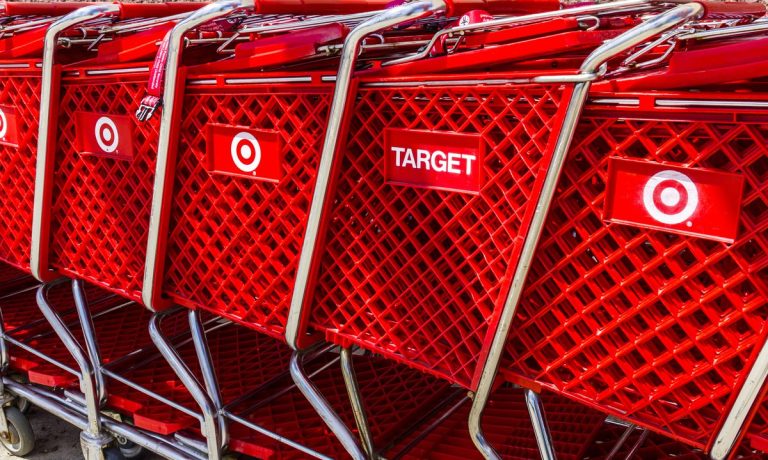
As retailers’ supply chain challenges continue with no end in sight, Minneapolis-based big box department store chain Target is turning its focus to grocery prioritize its strongest channels.
The company announced Tuesday (June 7) a plan of action for tackling supply chain complications and improving its inventory difficulties, which includes lowering prices to offload excess items and canceling orders, while focusing on high-performing categories including food and beverage as well as household goods and beauty.
This focus on grocery shows the brand investing in the category with the greatest potential to keep consumers coming back on a regular basis, given that food is a day-to-day need, and the typical consumer shops for groceries multiple times a week.
“The additional steps we are announcing today will ensure that we deliver for our guests while driving further growth,” Brian Cornell, Target’s chairman and chief executive officer, said in a statement. “While these decisions will result in additional costs in the second quarter, we’re confident this rapid response will pay off for our business and our shareholders over time, resulting in improved profitability in the second half of the year and beyond.”
With this focus on grocery, Target is following the strategy that has yielded great success for competitor Walmart, the world’s largest grocery retailer, which brings in more than half its sales from food and beverage categories.
In fact, more than one in four consumers purchase from Walmart each month, according to data from PYMNTS’ study “Decoding Customer Affinity: The Customer Loyalty to Merchants Survey 2022,” created in collaboration with Toshiba Global Commerce Solutions. The report, which drew from a survey of more than 2,000 U.S. consumers, found that 28% had made a grocery purchase from Walmart in the previous 30 days, making the mega-retailer far and away consumers’ most-frequented grocery store. In contrast, Target did not make the top 10 grocery retailers.
Read more: Decoding Consumer Affinity: The Customer Loyalty To Merchants Survey 2022
In an interview with PYMNTS, Chieh Huang, CEO of membership-free wholesale eTailer Boxed, said inventory management is a key differentiator for today’s grocers.
“Right now, given supply chain constraints, I think the ability to be in stock, the ability to deliver your entire basket on time and in full [is key],” he said. “It’s something that sounds so simple, but because of supply chain constraints, because of inventory management technology issues with a lot of the legacy brick-and-mortar grocers, it’s easier said than done. And I think just simply being on time in full can really help you stand out.”
Related news: Boxed CEO: Inventory Management Is Key to Winning Over eGrocery Customers
In fact, data from the Decoding Consumer Affinity study show that 51% of shoppers said ensuring that the grocery products they want are in stock and available for purchase is key to their continued patronage of a given merchant, and 6% of shoppers listed this factor as the single most influential driver of merchant selection for them.
Making investments in optimizing inventory management in the long run is especially important now, as White House economists predict that the supply chain issues born out of the COVID-19 outbreak will long outlast the pandemic, according to an April report in The New York Times.
“Though modern supply chains have driven down consumer prices for many goods, they can also easily break,” the Council of Economic Advisers report states.